By far, the most common challenge people have when it comes to improving their diet is that "healthy food costs too much". I'm going to show you that healthy eating on a budget can be easy. You can easily save money at the supermarket if you just know how and where to look. Throughout my coaching career, many people have told me that they just can't afford to make better food choices. They rely on junk food and convenience items as that's all they can afford. I think the real problem is that they've just never been shown how to make affordable and healthy decisions.
More...
In this article, we'll look at the following things:
What do we mean by healthy eating, and how to do it on a budget?
Healthy eating means consuming a wide variety of foods, mostly from the 5 main food groups as per national healthy eating guidelines.
We need to eat plenty of foods from plants (fruit, vegetables, grains and cereals) to keep our bodies in good working order. Eating these healthy foods won't blow your budget - they're relatively cheap and easy to access.
Animal-derived food (like meat, fish, eggs and dairy) are a bit more expensive. Similarly, their alternatives, for example - nuts, soy milk and tofu, can cost a bit more. That's ok though, as a general rule we need a bit less of these foods in our diet anyway.

While a healthy diet can contain some junk foods and treats, we do tend to need a bit less.
Spend wisely to eat healthy on a budget
Making sure that you fill your trolley with healthy, satisfying foods makes it easy to fill plates and big appetites.
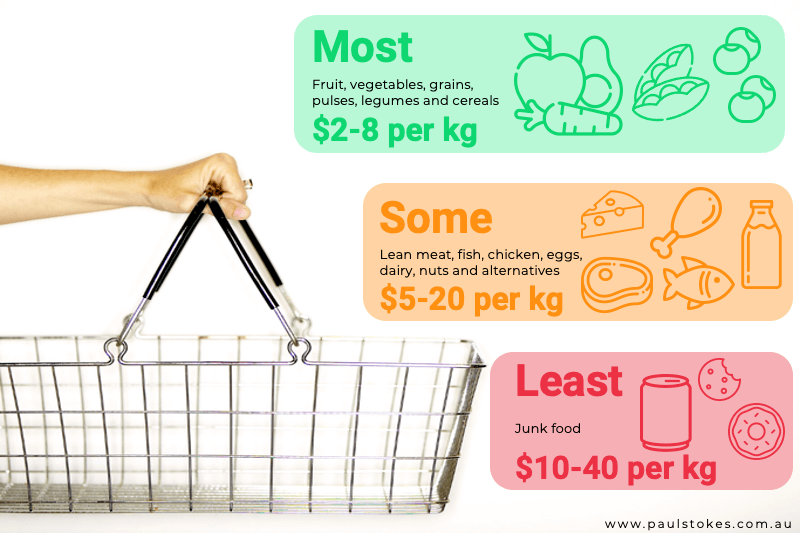
Aim for 60% of your shopping to come from the green 'Most' category, 10-30% from the amber category and less than 10% from the red 'Junk food' category
What can I get for $100?
Ok, so everyone has a different idea on how much they can spend on food. That's totally fine, we all need to live within our means. Being on a strict budget doesn't mean you can't follow the main healthy eating guidelines. It's all to do about choices.

You can save money at the supermarket just by adjusting your spending pattern.
Not only will you be able to buy more physical food, but your choices will also be much healthier. It's important to know that food volume is important when attempting to make changes to your diet. Healthy eating guidelines are based around generally consuming less energy-dense foods. Your stomach can only hold a set amount - it has a limited volume. By making healthier choices, you can buy much more and, even though you're consuming fewer calories, your stomach will feel much fuller.
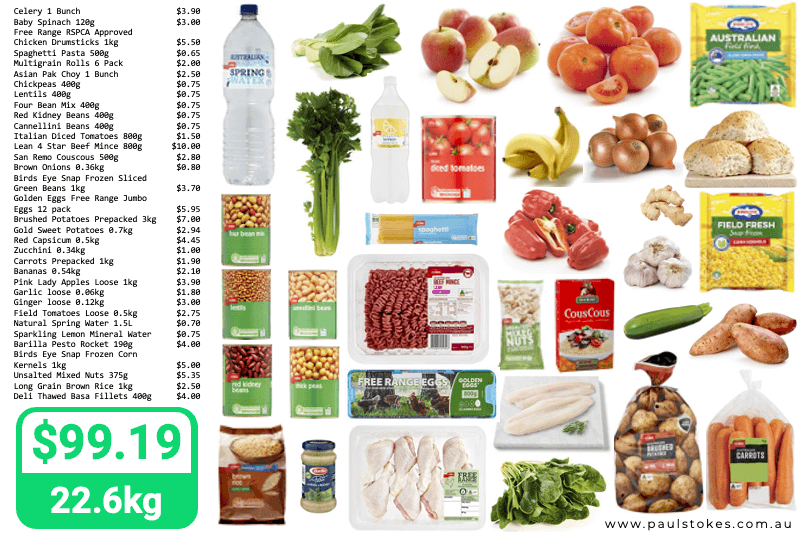
Junk Food 101
Ever thought about why it's call junk food? What is 'junk'? Excess stuff, surplus to requirements. That is to say, garbage that's not needed. Things you have that don't really serve a purpose but you hang onto anyway.
That's exactly what junk food is too - rubbish that our body doesn't need. You may also hear it referred to as empty calories or discretionary choices. In general, these foods have too much sugar, salt and saturated fat. What's more, they lack the minerals, nutrients and other good stuff our bodies need to stay healthy.
The sweets, the chocolate, crisps, chips, sugary drinks, cakes, cookies and ice cream. Too much can easily lead to weight gain as well as a range of other health issues. While it's fine to include them once in a while as a treat, the problems arise when they are consumed regularly. Out of habit rather than necessity.
It's not easy to avoid - junk food is everywhere.
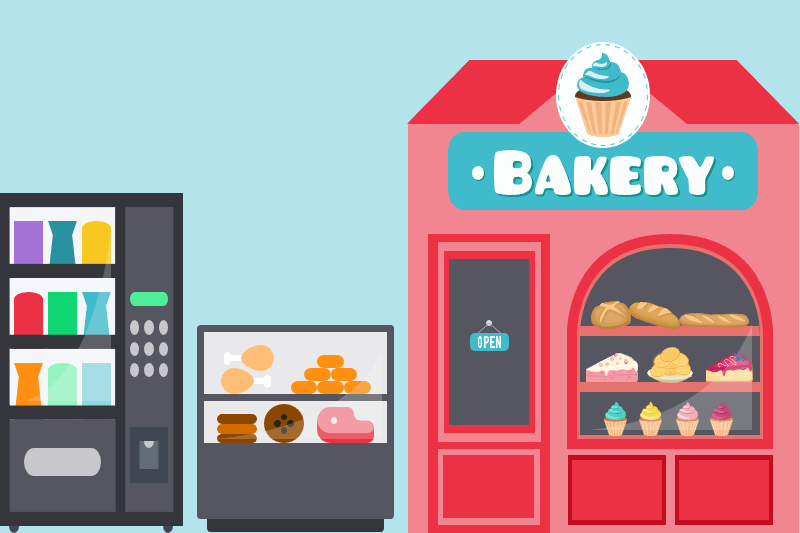
Junk food is everywhere
Eating less junk food will free up more of your budget for healthy food choices. Save money not only at the supermarket or grocery store but while you're out and about too.
How to save money at the supermarket when shopping for healthy food
Shop the smart way and you'll be surprised at the amount of money you save. Not to mention how much healthier your grocery haul will be.
When comparing items to find the best value, use unit prices listed on the ticket. More on this later
Secondly, write a list and stick to it. Only walk down the aisles you need to and avoid temptation and impulse buys. I often use the Reminders app on my iPhone - I can just tap each item to cross it off as it goes in my trolly.
Have something to eat before making your way to the supermarket. If you can avoid shopping when hungry, you'll be less inclined to buy more than you need to or waste money on impulse snacks.
Does branded mean better?
Likewise, save money by trying out the supermarkets' own brands. You'll often find they provide similar quality at a much more reasonable price. This is especially true for products with only a few ingredients or single items. Tinned tomatoes, rolled oats, dried herbs and spices. How much difference is one brand to the next really?
Shopping with children? I'm sure you know how much they can nag. By the time you get to the checkout, you might find your trolley full of items you've been 'coerced' into buying. As a result, your budget is blown and children aren't renowned for their healthy eating choices. Instead, keep kids preoccupied and give them a mission to locate and collect a specific item on your list. Consequently, they'll feel involved and be more focussed on the task at hand. Depending on their age, maybe work with them beforehand to write out the shopping list using brightly coloured pens. They can have the responsibility of ticking items off one by one as they go into your trolley
There are loads of benefits to planning your meals
Meal planning can help ensure you get a wider variety of foods into your diet.
Meal planning saves time. Invest a little time initially by putting together your ideas, recipes and lists before going shopping. Get that time back (and then some) later. You'll know exactly what you need and won't be stuck for ideas on what you need to cook for dinner mid-week. Above all, a big part of saving money and spending wisely is just being organised.
Having a list and sticking to it will save you money at the grocery store. Consequently, you'll only buy what you need and having things written down. Additionally, your list will make you more accountable to your budget.
Waste less
Planning out your weekly meals reduces food waste. Sometimes saving money at the supermarket is as simple as wasting less. Plan for leftovers. For example, look at how many portions a recipe serves. If you are feeding fewer people (or children) pack away and freeze the leftovers. Top tip: leftovers make a great choice for lunch the next day.
You won't be as stressed. Certainly, food shopping can be stressful. Cooking can be stressful. We all need to stress less. A lot of the stress just comes down to being unorganised or having to put too many things together last minute. It's ok. Just sit down and plan everything out before you begin.
Plan what you will have for breakfast and lunch most days. Remember to include snacks and add these foods to your shopping list. That way, you can always have healthy treats to hand and will be less likely to reach for the junk food when you begin to get hungry.
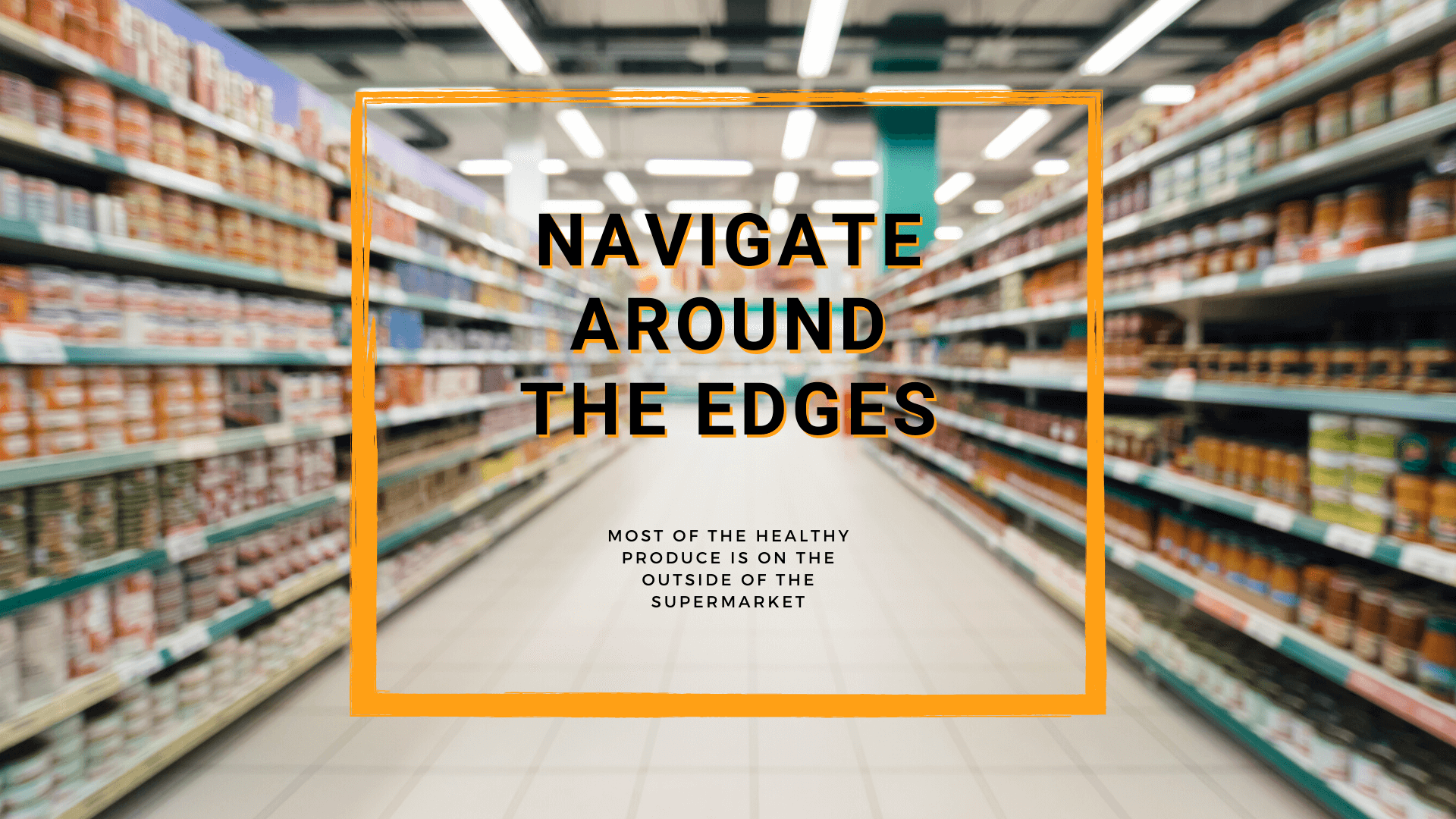
Avoid junk food temptation by sticking to the edges of the supermarket
Supermarket store layout
If you're determined to shop healthy, look at the layout of the grocery store and use it to your advantage. For instance, the majority of healthy foods and fresh produce are around the edges. The fruit and vegetables, dairy, fresh meat, bread and frozen vegetables. Observe where the junk food is and only navigate up and down the aisles for specific items on your shopping list.
Buying in bulk - making your healthy eating food budget go further
You can often save money by buying in bulk or receive discounts on multiple purchases of the same item. Remember though, it's only good value if you can use all of it before the food expires. Also, avoid deviating from your shopping list just because something's 'on special.' If you didn't want it or need it before, you don't need it now. Put it back on the shelf and walk away.

Buying more can mean you save more - but only if you need it and manage to use it all up
Use your freezer. If you can't use food straight away, freeze it in useable portions. I often divide mince up into freezer bags in 500g portions. Just be sure to clearly label each item you're putting away. Write what it is along with the date. That way you can keep an eye on things and make sure things get used while they're still at their best.
Flour, cereal, rice and other dry goods can be stored in air-tight containers to keep fresh longer.
Consider splitting grocery shopping with other family members or friends. You may be able to buy larger quantities of the things you need at cheaper prices and can go halves. Ask around - work colleagues, neighbours, social media connections. Remember, teamwork makes the dream work.
Eat more plants
You can save money on fresh fruit and vegetables by buying them when they're in season. Shops usually have them on special around this time as there's often a glut. You'll find fresh produce even tastes better when it's bought and cooked in season. As a general rule, if fruit and vegetables are grown locally and on special – they’re probably in season.
Don't worry though if you can't buy fresh. Frozen and tinned fruit and vegetables are also cheap, convenient and last a while. They're often just as nutritious, if not more so than their fresh counterparts.
Vegetable and legumes like peas, beans and lentils are generally much cheaper than meat. You can bulk up meals by substituting some or even all of the meat with alternatives.
Food swaps to save you money at the supermarket
Most recipes don't need to be followed to the letter. Think of them as more of a guide rather than a rigid procedure. Save money by using up the food you already have, or items that are on special that week. Switch things out in your recipe and weekly meals as you see fit.
Maybe you could use pasta shells instead of spaghetti.
Kidney beans on a 3 for 2 offer? Great! Use them instead of chickpeas.
Pumpkins at a good price? Use them instead of carrots.
Need firm white fish fillets? Check out the frozen section or defrosted fillets at the deli counter. Basa and Hoki are particularly useful as they hold up well to freezing and are often reasonably priced.
Fresh parmesan can be expensive. Although not as tasty, dried grated parmesan is cheaper. Depending on the recipe, it might not make too much of a difference. You can usually find it near the pasta sauces in the supermarket aisle. Don't forget, regular cheese can also be a great (and cheaper) substitution.
Colour me confused - ever notice how different coloured capsicums (bell peppers) vary in price? If you need a red one, consider buying green instead if it's cheaper. Make it even more affordable by considering carrot or cucumber and leaving the capsicum out.
Here are some more budget-friendly healthy eating food swap ideas
When you make... | Swap this | For this | Save |
|---|---|---|---|
 Stir Fry | 2 chicken breasts | 6 eggs or tofu | $3 at the checkout |
 Curry | 500g lamb | 2 tins chickpeas | $9 at the checkout |
 Lasagne | 500g beef mince | 250g beef mince + 1 tin lentils | $2 at the checkout |
Savings per week | $14 | ||
Savings per year | $728 | ||
I've also this other article with some more examples of easy food swaps you can make improve your diet.
Be sure to check that out as well.
How to read food labels to save money and improve your health
You can tell a lot about how healthy a pre-packaged food is by having a look at the nutrition panel and ingredients list. It's not always obvious what you're looking at though, or what pitfalls you need to watch out for. Hopefully, with the below guide, you'll be well equipped to decipher those boxes on the back of the packet.
Serving Size
This is usually an arbitrary amount, decided by the product manufacturer. Different brands may declare varying serving sizes for the same product. Bear in mind too that the given serving size may not be a realistic or even healthy, amount to consume.
Per 100g column
Since the 'per serve' valuation can vary considerably among brands, comparing per 100g values will provide a more accurate reflection.
Fats
Total fat content in food can comprise of many types of different fat. To make things simple, look for items low in saturated fat - this is more important than low total fat.
Sugars
This value includes both naturally occurring and added sugar. The ingredients list will likely provide further clues and help you choose foods that are lower in added sugar.
Fibre
This can also be listed as dietary fibre. Look for high fibre foods and include them regularly in your diet.
Sodium
Generally speaking, this is relative to the amount of salt in the product. Every 400mg of sodium equates to 1 gram of salt. Look for lower-sodium varieties and brands, particularly with canned goods.
Ingredients list
Ingredients in the product are listed in descending order by weight. Those items at the beginning of the list will be found in larger amounts than those at the end.
Allergies
Common allergens that may cause a reaction in those sensitive to them are listed in bold to make them easy to identify.
Hidden ingredients on food labels
Sometimes, manufacturers list ingredients using alternative names which may not be easy to identify what they are. For instance, salt, fat and sugar are often listed in disguise.
Salt | Fat | Sugar |
|---|---|---|
Sodium | Oil (any kind) | Evaporate cane juice Honey |
The difference between naturally occurring sugar and added sugar
All fruits, some vegetables and most dairy products naturally contain sugar. This sugar is accompanied by lots of good nutrients like protein, calcium, fibre and other minerals. These shouldn't cause concern and there's no need to avoid food with naturally occurring sugar. The ingredients list will tell you if the sugar on the nutrition information panel is naturally occurring or has been added.
Naturally occurring sugars won't be listed in the ingredients list. When the food is sent for nutritional analysis to produce the label, these sugars show up and the amount present is listed in the information panel. If any sugar appears in the list of ingredients, then it is not naturally occurring. That is to say, it has been added by the manufacturer.
Some foods may contain either naturally occurring sugar, added sugar, or a combination. Choose foods that are lower in added sugar where possible for greater health benefits. Certainly, save money at the supermarket by selecting foods with less added sugar.
Using food labels to decide if the food is a healthy choice
It's worth noting that products containing a long list of ingredients will be highly processed. Whole foods, as close to their natural state as possible, are usually cheaper and better for you. Don't be put off by foods with only a few ingredients - they're likely to still be ok.
For a fair comparison between foods and brands, look at the per 100g column. The table below should help you decide on how healthy the food is. Remember, numbers on the information panel aren't the only important thing, but they're a good place to begin.
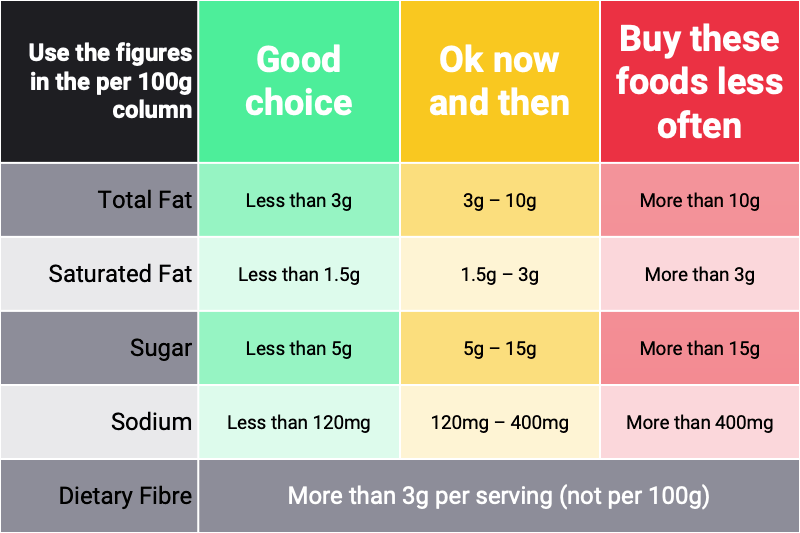
Nutritional information labels can help you decide if the food is healthy or not
Australia's Health Star Rating System and Healthy Eating Guidelines
The aim of the Health Star Rating system to make it easier for consumers to identify healthier versions of their favourite products. Nutritional information is simplified and placed on the front of the package. The overall nutritional profile of the food has been analysed and given a rating out of 5 stars. Hence the more stars a product has, the healthier the choice.

An example of the Health Star Rating as seen on the front of a food product
The system is best used to compare similar foods. For example, comparing different brands of yoghurt, or one breakfast cereal with another. To clarify, use the stars to decide which yoghurt to buy not whether to buy the yoghurt or the breakfast cereal.
Limitations of the Health Star Rating System
It may sound obvious, but remember the star ratings only appear on prepacked foods. Many items that deserve 5 stars can't show them. Take fresh fruit and vegetables, for example, they'll never have a star rating as they're not 'manufactured.'
Also, the rating system isn't in use across all products of all brands. Some manufacturers may choose to only display them on their healthier options and flavours. On the other hand, some food producers don't use the rating system at all. Just because there's no rating on the packet, doesn't necessarily mean it isn't a healthy choice.
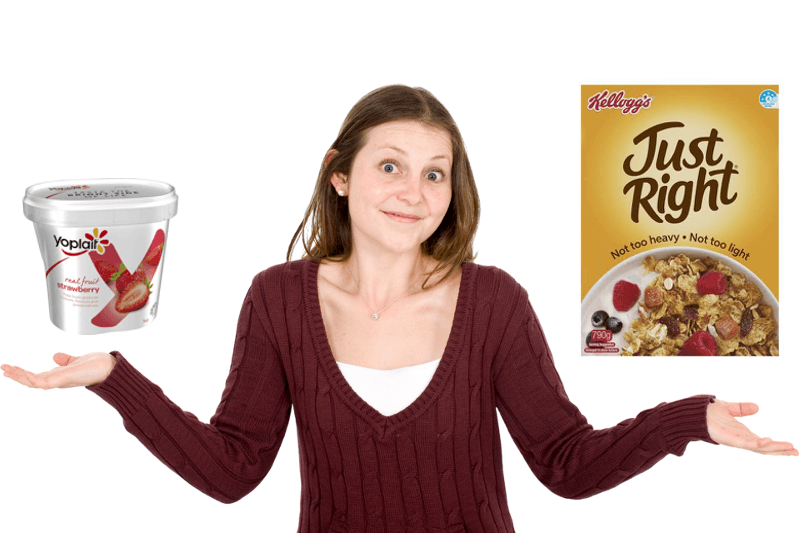
The Health Star Ratings aren't designed to compare products in different categories
Some people get confused and use stars to compare foods in different categories. As an example, a 4-star muesli bar may not be a better choice than a 3.5 star frozen meal. The stars should only be used to identify healthier options in each category and to compare like for like.
You can view the government website to get more information on Australia's Health Star Rating and how it is used.
Marketing tricks can make foods appear healthier than they are
Food marketing is big business. The more cheaply companies can produce products, the higher their profits. The more they can sell, that is to say, the more they can get you to buy, the more money they make.
There are several tricks manufacturers and their marketing departments use to make foods appear healthier than they are. The aim is that if they can convince us they are healthy, they can convince us to buy them. Supermarkets know this and you can save money by avoiding their tricks and tactics.
Nature and natural packaging
Brown paper and cardboard. Green leaves on the box. Pictures of natural landscapes and lush green pastures. Brands often use 'fresh', 'farm' and even 'nature' in their names to appeal to our ethical, earthly side. By positioning themselves "close to nature", they can try to make us think the products are less processed than they are.
Ticks, seals of approval, claims and awards
A food's won all these accolades, it must be great. Right?
Step back for a minute and check them yourself. Is this product special, or are the claims just meaningless?
Superfood. Cholesterol Free. Gluten-Free. Are the claims even relevant? For instance, gluten-free is often touted on products that have never even contained wheat or flour in the first place. Manufacturers' may make us think they've pulled out all the stops to produce this exceptional item free of supposed 'nasties.' The thing is, many whole foods in their natural state are completely gluten and cholesterol free to begin with.
And my personal favourite... free of artificial sweeteners. So just added natural pure sugar then?!
Small people appeal
Bright colours. Gimmicks. Free toys and cartoon characters on the boxes and packets of junk food.
As every parent knows, kids nag. And nag some more!
Supermarkets and grocery stores even take advantage of this in how they place certain products in the aisles. Adults may not notice, but many products aimed to capture children's attention are placed on lower shelves. Right at kids' eye level. Usually not healthy choices, most adults would walk right past them. Easier said than done though when there's a screaming 4-year-old tagging along who just has to have the latest cereal/drink/candy bar. You know, the one with the free toy and loaded with sugar. Save money by knowing the supermarkets' and grocery stores' tricks beforehand.
Less than
Food packaging can make all sorts of claims that they have less of something. The question is, "less than what?"
25% less fat in bold print doesn't necessarily mean the product is low in fat. Or that it's lower in fat than another brand. Maybe it just has less fat than it did 10 years ago? Perhaps it has less fat than the same brands' "full fat" version. Read the labels closely.
The frustrating thing is, truly healthy foods tend to have much less advertising and marketing claims made about them.
Fresh fruit and vegetables, eggs, lentils, lean meat, seafood and dairy usually don't have hyped up packaging. Or any packaging at all in some cases.
Use Unit Price to compare across different sized packets and brands - maximise your healthy eating budget
Unit price can be shown in several different ways. For example, $ per 100g, per 100ml, per kilo, per litre, per roll. These can help us decide which products offer the best value, not necessarily just the cheapest.
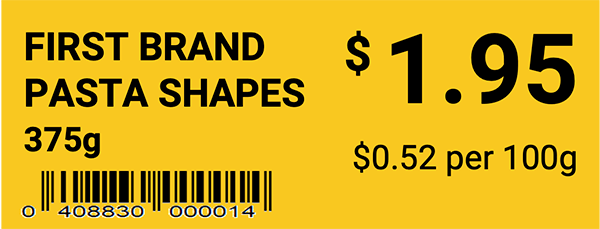
'First Brand' product initially looks cheaper
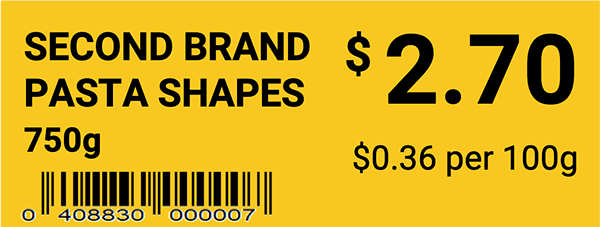
'Second Brand' although a higher price, offers better value for money at only 36 cents per 100g
You can't always rely on the smaller ticket price. Compare products to see which provides better value for money.
The true cost of convenience on your healthy eating budget (and your waistline)
We're continuously in a battle - between things we want to get done and the amount of time we have to get them done. Stores are full of 'convenience' items to help make our lives easier. Pre-prepared fruits and vegetables. Ready-made freezer meals. Packaged food that allows us to skip a few steps in its preparation.
Yes, this can be convenient. But you pay for the privilege. What you save in time, you spend from your wallet. In general, homemade versions are usually healthier and cheaper. Save money at the supermarket by just investing a little more time on your own food preparation.
Products are sometimes portioned into single serves. Almost all of these are (much) more expensive. If you can, buy larger packs and divide them up. For instance, make your own single servings using zip-lock bags or individual containers.
Bear in mind though, there are sometimes exceptions. It always pays to check back on the unit price. When buying fresh produce, for example, you might find the big 3kg pre-bagged sack of potatoes offers better value than the 'loose' potatoes you have to bag yourself.
The below images show just how you can save money at the supermarket by making and preparing your own food at home.
Pop your own
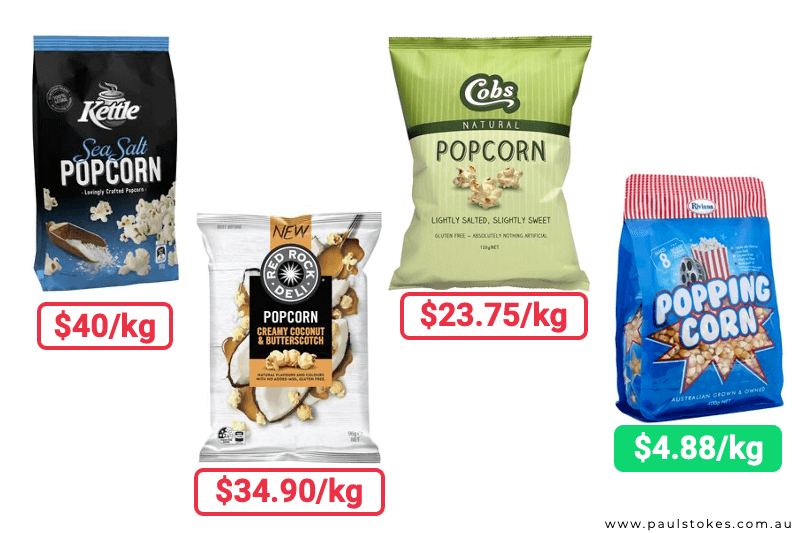
Prepacked popcorn is expensive - buy the kernels and pop it yourself at home
Muesli and Granola bars
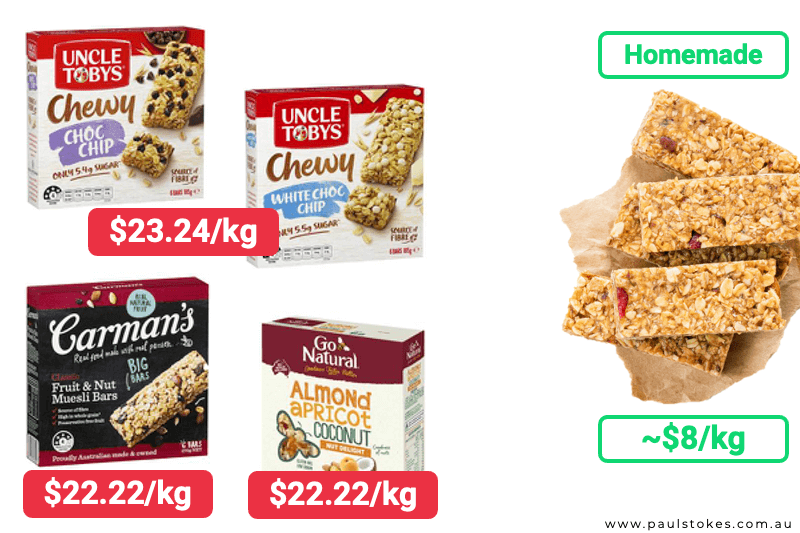
Make your own muesli or granola bars more cheaply than you can buy them
Pasta sauce
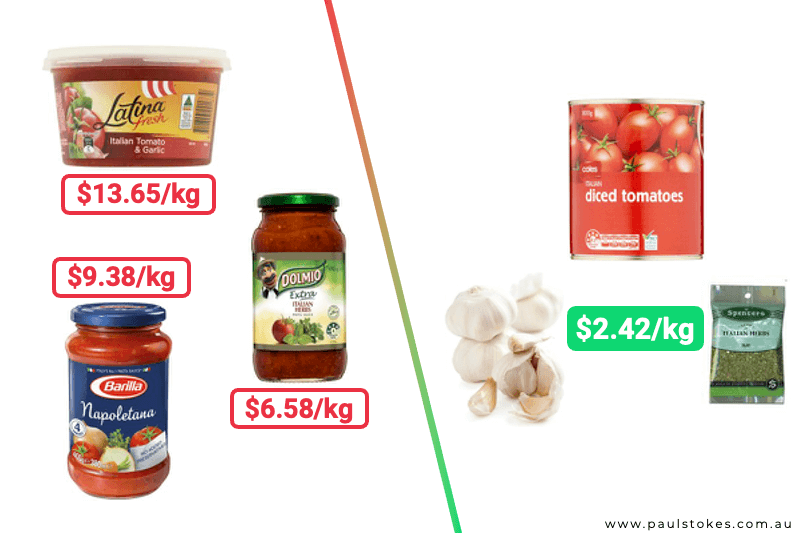
Making your own pasta sauce from fresh ingredients will save you money and doesn't take long
Ready-prepared vegetables
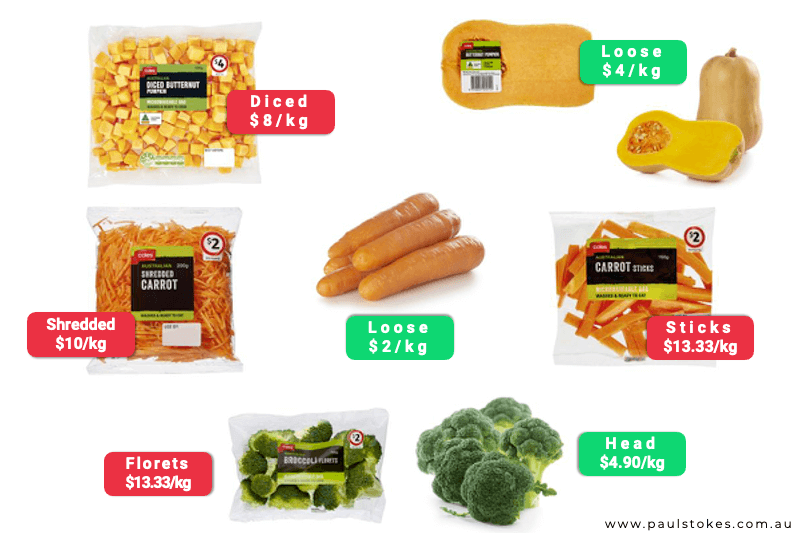
Prepared vegetables are more expensive than if you wash, peel and cut them yourself at home
Figuring out where your money goes and how to budget for healthy eating choices
Here's a method you can use to accurately assess just how healthy your food shop is. Furthermore, you'll be able to see for yourself where you might be overspending. Additionally, it will highlight where you can save money on your supermarket shop. It will get you thinking as to how you can make healthier choices when it comes to budgeting for groceries.
How to begin analysing your food budget
Save all supermarket receipts for a period of 2 weeks. Include receipts from any delis, greengrocers, markets, butchers - anywhere you buy food. Even snacks you impulsively buy when filling up at the petrol station. Or the ice cream you treat yourself to when it's a nice day.
You might be able to do it with just one week's worth, but I find a fortnight usually gives a clearer picture of your spending habits.
Next, you'll need a calculator, or put together an excel spreadsheet if you're that way inclined. Alternatively, you can just work it all out on your phone.
You'll also want to grab 3 different coloured highlighters or pens, plus a sharpie or black marker.
Step by step guide to figuring out your healthy eating budget
Firstly, go through each of your receipts and cross off any non-food items. For the purposes of this exercise, we're only looking at improving your food budget towards healthy food. Score out items like dog food, cleaning products, toiletries, etc.
Go through each receipt line by line and decide which category each item falls into. Refer back to the healthy eating food categories shown above. Highlight foods in each category with a different colour so they are easier to identify. Remember, in this context, the 'Eat most often' category is about how often these foods should be eaten according to national healthy eating guidelines. You're only categorising foods based on where they generally fit into the healthy food pyramid. To clarify, you're not trying to identify the foods that you personally eat most, for example.
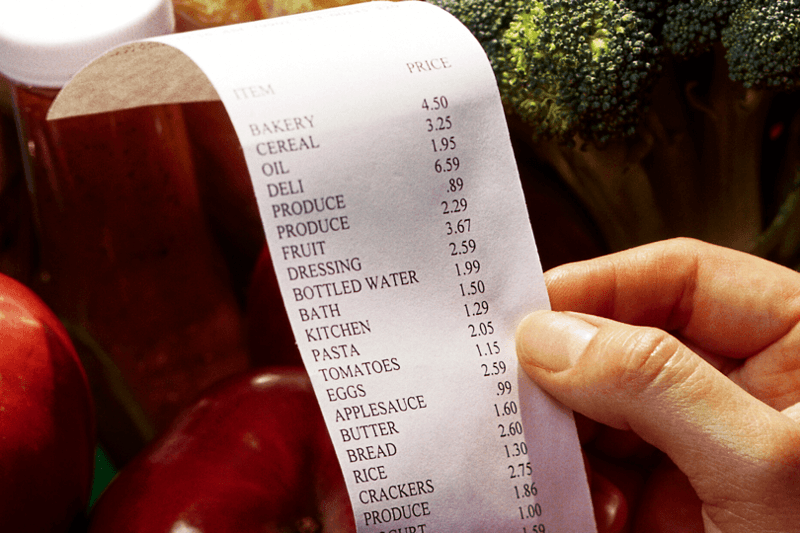
If you're serious about eating healthier while saving money, it's important to know where your budget is going
Work out how much you spend on each 'Healthy Eating Category'
Now, total up the spend on each category. For example, add together all the purchases you've highlighted in the 'Green' or 'Eat most often' category. This will give you the group total for that category. Do the same for foods in the 'Sometimes' and 'Junk food' categories.
Add up your three group totals to calculate your food total. This is basically how much your food spend was over the period. Later, you can divide this total by the number of weeks' receipts to give you an average weekly food spend figure.
Finally, for each category, divide the group total by the food total, and multiply by 100. This will show you what percentage of your food spend goes towards each category.
Splitting up your food spend budget
Ideally, you want to be spending 60% or more of your food budget on healthy eating choices. That is to say, most of your money should be going on fruit, vegetables, grains, pulses, legumes and cereals. Additionally, 10-30% of your budget can be allocated towards items in the 'Eat sometimes' category. This includes your meat, eggs, dairy, fish, nuts, etc. Lastly, just 10% (or less) should be spent on junk food items. Aim to spend as little as possible on the sugary drinks, sweet treats, chips, chocolate, etc.
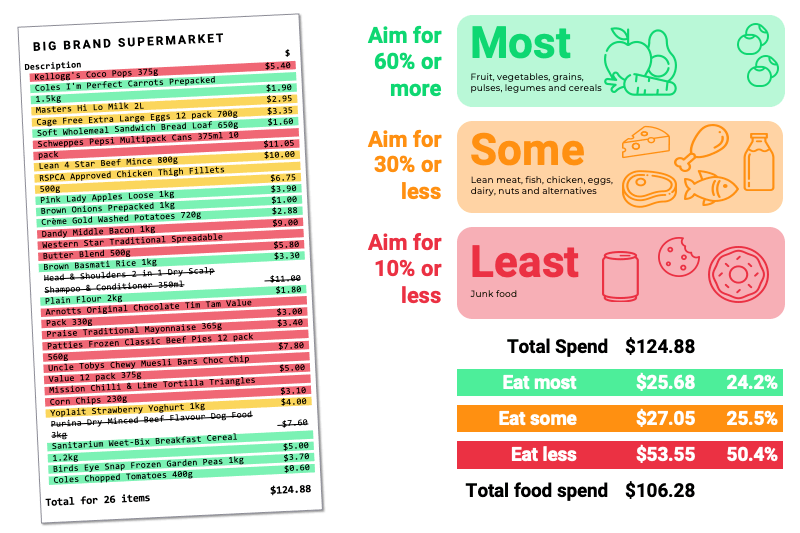
Go through your receipts to check how your budget compares to the healthy eating guidelines
In the above example, the total spend was $124.88 but this included a couple of non-food items. The actual amount spent on food was $106.28 (total of the 3 categories).
Current spending in the 'Eat most' category totalled just $25.68. As a percentage, $25.68 divided by $106.28, then multiplied by 100 equates to just 24.2%. Remember, we should be aiming to spend 60% of our food budget on this category.
Armed with this knowledge, you'll be well on your way to saving money next time you hit the supermarket.
How to adjust your budget and save money on healthy eating
Ok so by this point you may have had your eyes opened at just how much you are spending on food. That's ok, we can work with that.
What's the next step then towards adjusting your shopping habits towards more healthy choices? See some guidance below. Pick a few tips you can work on straight away, the next time you hit the supermarket.
Remember, changing habits takes time. You won't get it right straight away, and that's fine. Keep going, little by little, making adjustments to your shopping here and there. In 6 months, not only will you be healthier, there's a good chance you'll have more money in your back pocket too!
Tips to spend less money on junk foods
- Aim to avoid sugary drinks altogether
- With breakfast cereal, swap from a sugary low-fibre option to a plain one such as Weet-bix or rolled oats. Add your own fruit, nuts and/or seeds to liven it up if you like.
- Use hummus or avocado in sandwiches instead of butter or margarine. You'll get more nutrients in that way.
- Make your own tortilla chips. Cut and cook wraps in the oven or toast in a grill or sandwich press.
- Buy lean mince instead of sausages.
- Snack on fruit as a first choice. Reach for the fruit bowl instead of the chocolate bar.
Saving money by spending less of your budget on the 'Eat sometimes' category
- Aim to reduce the amount of meat you use. For a stir fry, pasta sauce or curry, 100g meat per person is plenty. Swap out half the mince for a tin of beans, or lentils, when making a recipe. You'll save money, improve the nutritional content and introduce new flavours into the meal too.
- In salads, go for egg or tinned fish instead of meat or chicken.
- Where possible, buy in bulk. Particularly with meat, it's often cheaper to buy in big pieces or large packs. Divide it into portions when you get home, label and freeze.
- Similarly with other foods, make individual portions of nuts, yoghurt or cheese cubes. Use reusable container - or wash out jars or food packaging to use too. Help the environment while you're at it.
- Save money by wasting less. Freeze foods which are getting a little close to their use-by date. For example, chicken, meat and milk all freeze well. Eggs can be separated into yolks and whites and frozen separately in bags. Blocks of cheese can be grated and frozen.
How much are you going to save?
Healthy eating doesn't have to be hard, even if you're on a tight budget. Know what to spend your money on and how to save at the supermarket. Spend less at the grocery store even though you're buying more food.
Sound too good to be true? Try it and see for yourself. Let me know in the comments below how these tips worked for you. I'd love to know how you got on with them!
Did I miss something?
Got some money-saving tips of your own? Let me know in the comments below and maybe you'll be featured in a future update!

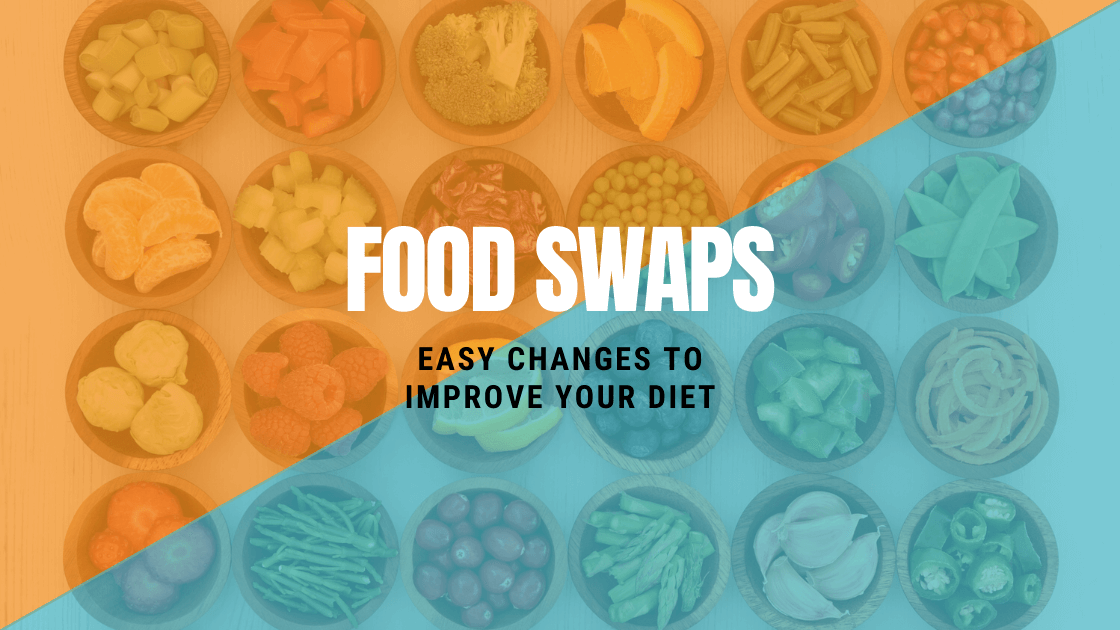
Hi Paul,
Thank you for your article. It’s very informative. I was just wondering if your $100 budget is based /person or a family of two children for example?
Hi Gianna, glad you liked the article.
The $100 examples I used were just to illustrate how money could be spent differently to get varying quantity (and quality) of food. They really weren’t based on any specific situation or set of circumstances, as each family unit will have their own requirements – both nutritionally and financially.
Hope that clears things up
Love this! Thank you for sharing!
You're very welcome, glad you found it helpful
Great blog right here! Additionally your website
loads up fast! What host are you using? Can I am getting your affiliate hyperlink for your host?
I wish my website loaded up as quickly as yours lol
Have you ever considered creating an ebook or guest authoring
on other blogs? I have a blog based upon on the same
ideas you discuss and would really like to have you share some stories/information. I know my audience would enjoy your work.
If you are even remotely interested, feel free to send me an e-mail.